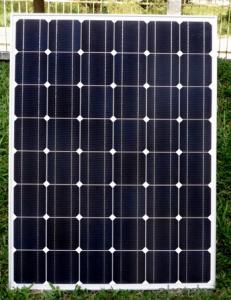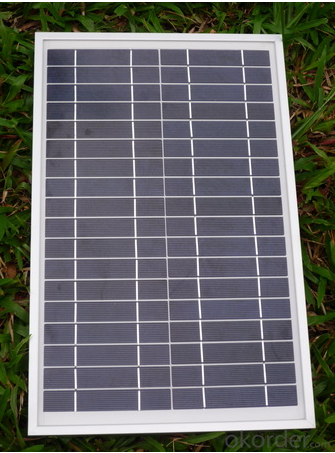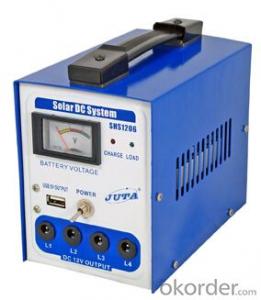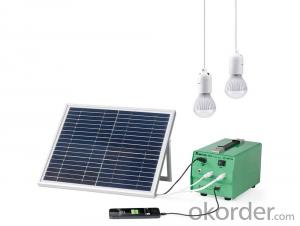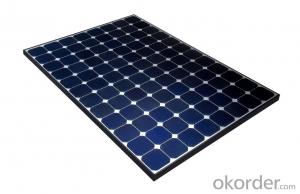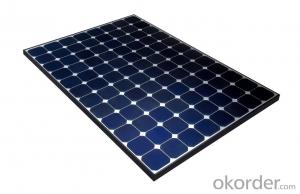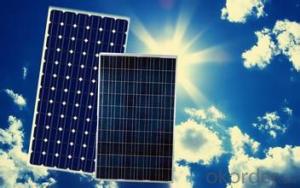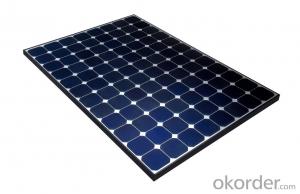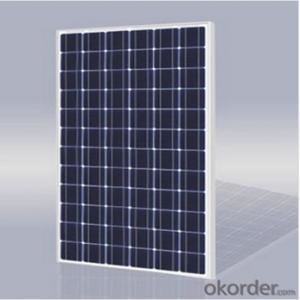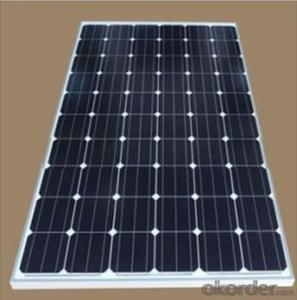400kw CNBM Monocrystalline Silicon Solar Energy Systems SES Panel for Home Use
- Loading Port:
- Shekou
- Payment Terms:
- TT OR LC
- Min Order Qty:
- 100 watt
- Supply Capability:
- 1000 watt/month
OKorder Service Pledge
OKorder Financial Service
You Might Also Like
Specification
400KW CNBM Monocrystalline Silicon Panel for Home Using
Production description
Solar power is the conversion of sunlight into electricity, either directly using photovoltaics (PV), or indirectly using concentrated solar power (CSP). Concentrated solar power systems use lenses or mirrors and tracking systems to focus a large area of sunlight into a small beam. Photovoltaics convert light into anelectric current using the photovoltaic effect.[1]
The International Energy Agency projected in 2014 that under its "high renewables" scenario, by 2050, solar photovoltaics and concentrated solar power would contribute about 16 and 11 percent, respectively, of theworldwide electricity consumption, and solar would be the world's largest source of electricity. Most solar installations would be in China and India.[2]
Solar energy is radiant light and heat from the Sun harnessed using a range of ever-evolving technologies such assolar heating, photovoltaics, solar thermal energy, solar architecture and artificial photosynthesis.
It is an important source of renewable energy and its technologies are broadly characterized as either passive solar oractive solar depending on the way they capture and distribute solar energy or convert it into solar power. Active solar techniques include the use of photovoltaic systems,

Feature
1.High conversion efficiencies resulting in superior power output performance.
2.Outstanding power output even in low light or high temperature conditions
3.Optimized design for ease of soldering and lamination
Physical characteristic
1. Rigorous quality control meets the highest international standards.
2. High-transmissivity low-iron tempered glass, strong aluminium frame.
3. Using UV-resistant silicon.
4. IS09001/14001/CE/TUV/UL
packaging
26pcs in one carton 6pallets in 20foot container 14pallets in 40 foot container.
- Q: Can a solar energy system be installed in areas with high winds?
- Yes, a solar energy system can be installed in areas with high winds. However, it is crucial to take into account the wind load and design the system accordingly. Solar panels are designed to withstand various weather conditions, including strong winds, but they need to be properly mounted and secured to ensure their stability. Additionally, using aerodynamic mounting systems and tilt mechanisms can help reduce the impact of high winds on the solar panels. It is recommended to consult with a professional installer who can assess the specific wind conditions in the area and provide appropriate solutions to ensure the system's durability and performance.
- Q: Can solar energy systems be used in powering shopping malls or retail centers?
- Yes, solar energy systems can definitely be used to power shopping malls or retail centers. These large commercial spaces typically have large roof areas that can accommodate a significant number of solar panels. By installing solar energy systems, these establishments can reduce their reliance on grid electricity and lower their operational costs. Additionally, solar energy systems can help reduce carbon emissions and promote sustainability in the retail industry.
- Q: How do solar energy systems impact the resale value of a commercial building?
- A commercial building's resale value can be positively influenced by solar energy systems, as several factors contribute to this increase. To begin with, solar energy systems present the building owner with potential energy savings. By harnessing electricity from the sun, the building can decrease its reliance on conventional energy sources, resulting in reduced utility bills. This cost savings can be an appealing selling point for potential buyers, as it not only lowers operational expenses but also offers a more sustainable and environmentally friendly solution. Additionally, solar energy systems are regarded as a long-term investment. They typically come with warranties and have a lifespan of 25 to 30 years or more. This means that a commercial building equipped with a solar system can provide a dependable and consistent source of renewable energy for many years to come. Buyers are often attracted to this added value, as it instills a sense of security and minimizes future energy costs. Moreover, the installation of solar energy systems showcases the building owner's dedication to sustainability and environmental responsibility. In today's market, there is an increasing demand for eco-friendly buildings and businesses that prioritize renewable energy sources. This can entice buyers who share the same values and are willing to pay a premium for a building that aligns with their sustainability objectives. Lastly, the presence of a solar energy system can enhance the overall marketability of a commercial building. With growing awareness and interest in renewable energy, potential buyers may actively seek out properties with solar installations. This heightened demand can lead to a competitive bidding process, potentially driving up the resale value of the building. It is important to acknowledge that the impact of solar energy systems on a commercial building's resale value can vary based on factors such as location, size, and system efficiency. Additionally, market conditions and buyer preferences also play a role. However, overall, solar energy systems have the potential to positively influence a commercial building's resale value by reducing energy costs, providing long-term benefits, attracting sustainability-focused buyers, and enhancing marketability.
- Q: Can a solar energy system be installed on a boat or RV?
- Yes, a solar energy system can be installed on a boat or RV. In fact, it is becoming increasingly common for boat and RV owners to install solar panels to power their electrical systems. Solar panels can be mounted on the roof or deck of the boat or RV, or they can be portable and set up when needed. These panels harness sunlight and convert it into electricity, which can be used to charge batteries, power appliances, and run various electrical devices. Installing a solar energy system on a boat or RV offers several benefits, such as reducing reliance on traditional fuel sources, providing a sustainable and renewable energy option, and allowing for greater freedom and flexibility in remote locations where access to electricity may be limited. Additionally, solar panels are lightweight, durable, and low maintenance, making them well-suited for the mobile nature of boats and RVs.
- Q: Can solar energy systems be used in areas with limited access to sanitation facilities?
- Yes, solar energy systems can be used in areas with limited access to sanitation facilities. Solar energy systems, such as solar panels, can provide electricity to power water pumps, filtration systems, or other sanitation equipment. This can help improve access to clean water and sanitation in areas that lack traditional infrastructure. Additionally, solar energy systems can operate independently of the grid, making them suitable for remote or off-grid locations without access to reliable sanitation facilities.
- Q: Can solar energy systems be used for powering emergency backup systems?
- Yes, solar energy systems can be used to power emergency backup systems. Solar panels can generate electricity even during power outages, providing a reliable and sustainable source of energy for critical systems such as emergency lighting, communication devices, medical equipment, and more. By harnessing the power of the sun, solar energy systems offer a viable solution for ensuring continuous power supply during emergencies.
- Q: Can solar energy systems be used for powering security cameras?
- Certainly, security cameras can indeed be powered by solar energy systems. The conversion of sunlight into electricity by solar panels enables the storage of energy in batteries or direct powering of different devices, such as security cameras. Consequently, solar energy emerges as an excellent and sustainable option for remote or off-grid areas where the installation of electrical cables might pose challenges or incur high expenses. Moreover, solar-powered security cameras possess the advantageous ability to function without interruption, provided there is an ample supply of sunlight to generate electricity. Consequently, they prove to be a dependable and environmentally friendly alternative for surveillance systems.
- Q: Can a solar energy system be used in areas with high levels of dust or sand?
- Yes, a solar energy system can still be used in areas with high levels of dust or sand. However, the efficiency of the system may be affected as the accumulation of dust or sand can reduce the amount of sunlight reaching the solar panels. Regular cleaning or maintenance may be required to ensure optimal performance of the system in such environments.
- Q: How does the efficiency of solar panels degrade over time?
- The efficiency of solar panels degrades over time due to various factors such as exposure to sunlight, temperature fluctuations, and the natural wear and tear. This degradation is primarily caused by the gradual degradation of the solar cells themselves, which can experience a decrease in their ability to convert sunlight into electricity. Additionally, environmental factors like dust accumulation and shading can also contribute to the decline in efficiency. Regular maintenance and cleaning can help mitigate some of these effects, but it's important to note that solar panels will still experience a gradual decrease in efficiency over their lifespan.
- Q: Can solar energy systems be used for powering streetlights or outdoor lighting?
- Yes, solar energy systems can be used to power streetlights and outdoor lighting. Solar-powered streetlights and outdoor lighting systems are becoming increasingly common and offer a sustainable and cost-effective alternative to traditional electricity-powered lighting. These systems harness energy from the sun during the day and store it in batteries, which then power the lights during the night. Solar energy systems for streetlights and outdoor lighting help reduce carbon emissions and dependence on the grid while providing reliable illumination.
Send your message to us
400kw CNBM Monocrystalline Silicon Solar Energy Systems SES Panel for Home Use
- Loading Port:
- Shekou
- Payment Terms:
- TT OR LC
- Min Order Qty:
- 100 watt
- Supply Capability:
- 1000 watt/month
OKorder Service Pledge
OKorder Financial Service
Similar products
Hot products
Hot Searches
Related keywords
